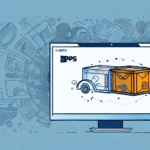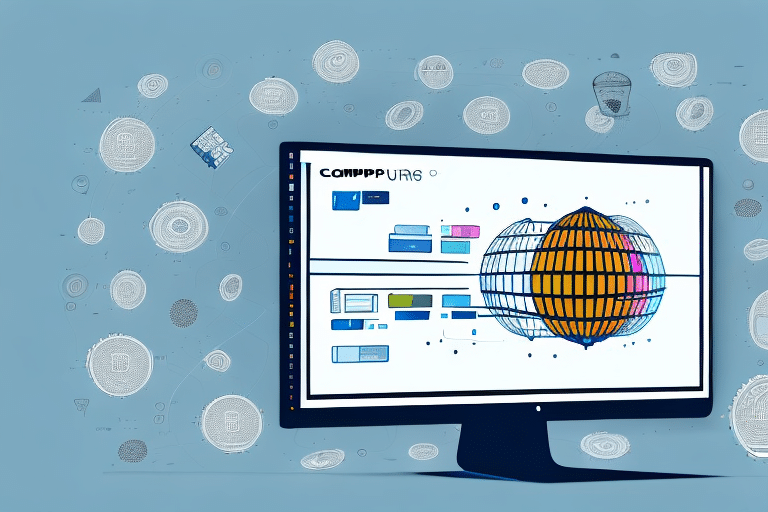Understanding the Importance of a Bill of Lading
A Bill of Lading (BOL) is a critical document in the transportation of goods. It serves multiple purposes, including functioning as a receipt for the shipped goods, a contract between the shipper and carrier, and a document of title. Accurate and comprehensive BOLs are essential for ensuring smooth logistics operations, preventing disputes, and facilitating the tracking and monitoring of shipments.
Key information included in a BOL typically encompasses:
- Names and addresses of the shipper and receiver
- Date of shipment
- Mode of transportation (e.g., truck, air, sea)
- Detailed description of the goods, including quantity, weight, and dimensions
- Special handling instructions, if any
Errors in a Bill of Lading can lead to significant delays, additional costs, and legal complications. Therefore, ensuring the accuracy and completeness of this document is paramount for all parties involved in the shipping process.
Overview of UPS Worldship
What is UPS Worldship and How Does It Work?
UPS Worldship is a comprehensive shipping management software designed by United Parcel Service (UPS) to streamline and automate various shipping processes for businesses. It allows users to create shipping labels, manage shipments, generate necessary documents like Bills of Lading, and track parcels in real time.
With a user-friendly interface, Worldship integrates seamlessly with existing business systems, enabling efficient management of large volumes of shipments. According to UPS, businesses that utilize Worldship can reduce shipping costs by up to 30% through optimized routing and consolidated shipments.
Benefits of Using UPS Worldship for Business Shipping Needs
- Streamlined Shipping Management: Centralizes all shipping activities, reducing manual entries and errors.
- Cost Efficiency: Optimizes shipping routes and consolidates shipments to save on costs.
- Real-Time Tracking: Provides up-to-date tracking information, enhancing transparency and customer satisfaction.
- Integration Capabilities: Compatible with various business systems and other shipping carriers, offering flexibility.
- Global Shipping: Facilitates international shipments with built-in customs documentation and compliance tools.
Creating a Bill of Lading with UPS Worldship
Step-by-Step Guide
- Log In to Your UPS Worldship Account: Access your account through the Worldship desktop application.
- Enter Shipment Information: Input the shipper's and receiver's details, including names, addresses, and contact information.
- Select Shipping Options: Choose the mode of transportation (e.g., ground, air), delivery speed, and any additional services such as insurance or signature confirmation.
- Generate Shipping Label and BOL: Use Worldship to create the necessary shipping labels and select the option to generate a Bill of Lading.
- Print and Attach Documents: Print the shipping label and BOL. Affix the label to the package and include a copy of the BOL inside the shipment for the receiver.
- Review for Accuracy: Double-check all entered information to ensure there are no errors that could disrupt the shipment.
Tips for Accurate and Efficient Bill of Lading Creation
- Double-Check Information: Verify that all shipment details are correct before finalizing the BOL.
- Use Clear Descriptions: Provide detailed and precise descriptions of the goods to avoid misunderstandings.
- Maintain Records: Keep copies of all BOLs for future reference and compliance.
- Utilize Automation Features: Leverage Worldship's automation capabilities to minimize manual data entry and reduce errors.
Common Errors to Avoid
- Incomplete Information: Ensure all required fields are filled out to prevent shipment delays.
- Incorrect Addresses: Double-check shipper and receiver addresses for accuracy.
- Wrong Shipping Options: Select appropriate shipping options based on the nature and urgency of the shipment.
- Missing Documents: Always include a copy of the BOL inside the shipment for the receiver.
Managing Your UPS Worldship Account
Setting Up Your Account
To begin using UPS Worldship, businesses must first set up an account with UPS. This involves providing essential business information, including company name, address, and billing details. Once the account is created, download and install the Worldship software on your desktop computer.
It's advisable to gather all necessary documentation, such as business licenses and tax identification numbers, to expedite the account setup process and ensure compliance with UPS requirements.
Using UPS Worldship for International Shipments
UPS Worldship supports international shipping by providing tools to generate required customs documentation and ensuring compliance with international shipping regulations. When preparing an international BOL, include details such as the Harmonized Tariff Code, country of origin, and value of goods.
According to the World Bank, global shipping accounts for over 80% of international trade by volume, underscoring the importance of efficient shipping management solutions like Worldship.
Integrating Other Shipping Carriers with UPS Worldship
For businesses utilizing multiple shipping carriers, UPS Worldship offers integration capabilities that allow seamless management of different carrier services within a single platform. This integration facilitates easier comparison of shipping rates, consolidates tracking information, and streamlines overall shipping operations.
By integrating other carriers, businesses can optimize their shipping strategies, leveraging the strengths of each carrier to meet diverse shipping needs effectively.
Tracking and Troubleshooting Shipments with UPS Worldship
Tracking Your Shipment
Once a shipment is dispatched, UPS Worldship provides real-time tracking capabilities, allowing businesses and customers to monitor the progress of their parcels. By entering the tracking number in the Worldship dashboard, users can view the current status, estimated delivery time, and any potential delays.
Real-time tracking enhances transparency, improves customer satisfaction, and enables proactive management of any issues that may arise during transit.
Troubleshooting Common Issues
- Incorrect Information: If shipment details are entered incorrectly, immediately update the information in Worldship and notify the carrier.
- Software Glitches: Ensure that the Worldship software is updated to the latest version to avoid technical issues.
- System Requirements: Verify that your computer meets the necessary system requirements to run Worldship efficiently.
- Customer Support: Utilize UPS's robust customer support for assistance with any unresolved issues.
For more detailed troubleshooting steps, refer to the UPS Support Center.
Benefits of Using UPS Worldship for Your Business
Adopting UPS Worldship offers numerous advantages for businesses engaged in shipping operations:
- Efficiency: Automates and streamlines shipping processes, reducing manual workload.
- Cost Savings: Optimizes shipping routes and consolidates shipments to lower expenses.
- Accuracy: Minimizes errors through standardized forms and automated data entry.
- Scalability: Supports businesses of all sizes, accommodating growing shipping needs.
- Global Reach: Facilitates international shipping with comprehensive tools and compliance features.
Implementing UPS Worldship can significantly enhance your business's shipping efficiency, accuracy, and overall operational effectiveness.
Conclusion
Creating and managing a Bill of Lading is a fundamental aspect of the shipping process, ensuring clarity and accountability between all parties involved. With tools like UPS Worldship, businesses can efficiently generate accurate BOLs, manage shipments, and track deliveries in real time. By leveraging the comprehensive features of Worldship, companies can optimize their shipping operations, reduce costs, and enhance customer satisfaction.
For more information on optimizing your shipping processes, consider consulting industry reports from sources such as the Statista or the Supply Chain Digital.






















